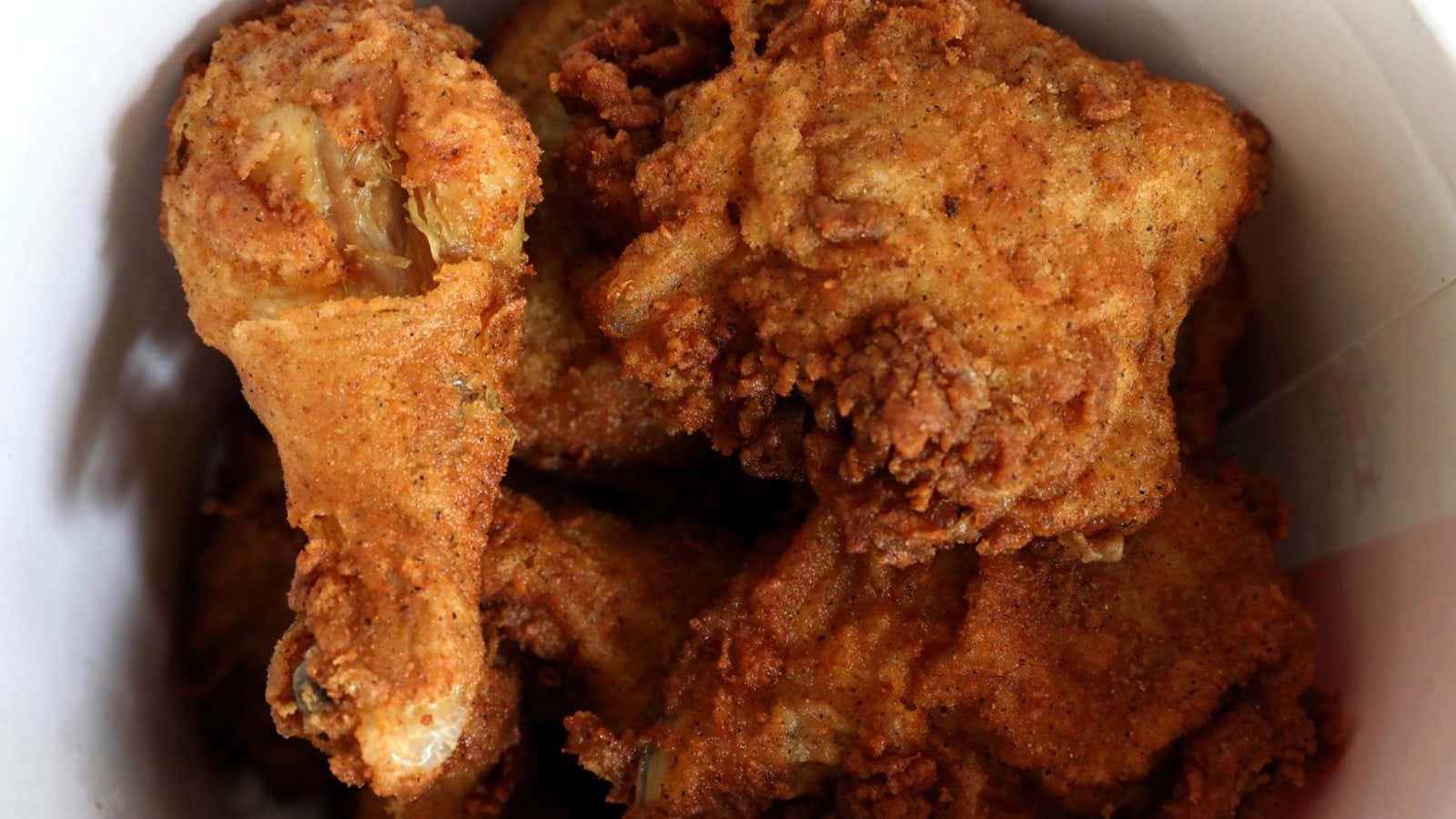The aroma of fried chicken is no longer enough to lure hungry customers in the highly competitive South African fast food market.
In the last decade, selling chicken in South Africa has had less to do with taste and more to do with the idea behind the brand. It’s not unlike the rivalry between Coca Cola and Pepsi or Nike and Adidas elsewhere, in which the campaign is more about identity than the product—and of course profit.
South Africans consume about 28 million chickens a week with more than 20% of these consumed in fast food outlets, according to reports on the industry. That makes chicken one of the most profitable sectors of agriculture and food retail.
“The fried chicken category in South Africa is one of the most highly contested and so because of this level of competition, creativity has become a leverage between the different brands to really connect with consumers,” Xolisa Dyeshana, chief creative officer of advertising agency Joe Public United, told Quartz.
The agency created the award winning character Sbu 2.0, a robot created by a science teacher who’d rather spend his time eating chicken wings from local chain Chicken Licken. Playing around the theme of the inescapable craving, Chicken Licken has also created characters like an afronaut who can’t resist his own chicken delivery to suffering astronauts in an international space station and a misplaced Icelandic boy whose oddly South African traits can only be cured by Chicken Licken.
The campaigns have successfully taken on the leaders of chicken advertising in South Africa, Nandos. Their campaigns like the “Last Dictator Standing” (released not long after Muammar Gadaffi’s death in 2011) and their recent commentary on corruption in South Africa, titled “We can fix our s#*t”, have gone viral. Nando’s has successfully courted controversy to become a brand associated nearly as much with creativity, comedy, and even design, as it is with chicken. Even as it enjoys international success, its message to South African consumers is very localized.
It isn’t enough to rely on international fame to sell to South Africans. Churches Chicken entered South Africa in the early 2000s, with plans to further its global rivalry with KFC. The Texas-founded brand never appealed to South Africans, forcing the local franchiser to exit the deal in about a year.
Popeye’s, which is owned by Canadian company Restaurant Brands International, entered the South African market last year and are still trying to make a go of it, even as local buyers are forced to curb spending due the sluggish economy. Like Church’s more than a decade before, Popeye’s also believes that its international fame will help it in South Africa, but early indications were that many South Africans didn’t recognize the name as the brand has yet to enter the media space.
The largest chain in South Africa, KFC has been here since 1971 and now has over 887 stores with localized menu items like the tradition maize staple pap as a side dish. Yet, even they recognized that it has to remain relevant in the advertising space and tried some new tricks.
In September, KFC’s marketers teamed up with chart-topping gqom duo Destruction Boyz to create a more urban depiction. A viewer complained about a car spinning in the advert, saying it promoted unsafe behavior and the Advertising Standards Authority of South Africa banned it from being shown on television. But as Nando’s banned adverts show, KFC’s brand is unlikely to be affected in the long term.
With advertising agencies coveting more awards and outlets chasing customers, it’s going to take more than a secret recipe to sell chicken in South Africa.
